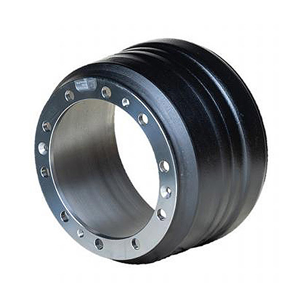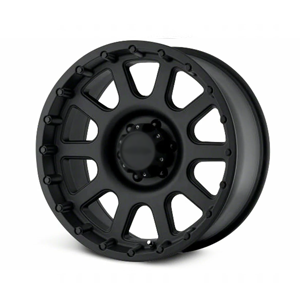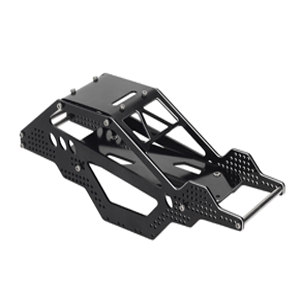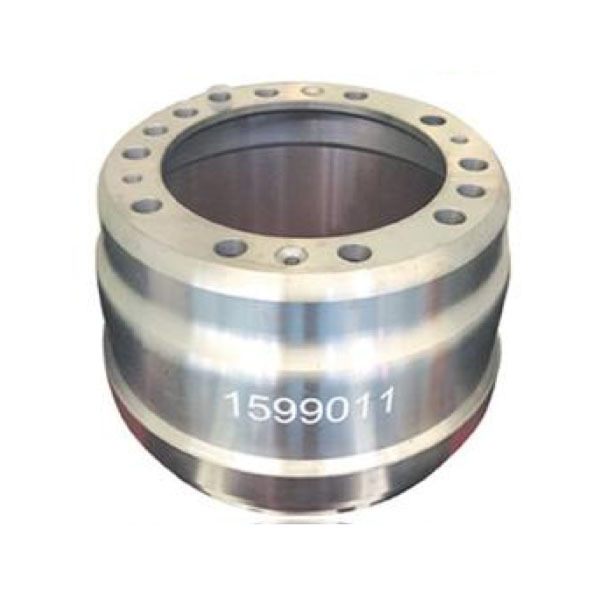How to Choose the Right Rear Axle Brake Drum for Your Vehicle
Oct 08,2025
How to Choose the Right Rear Axle Brake Drum for Your Vehicle
When it comes to vehicle safety and performance, the importance of the **rear axle brake drum** cannot be overstated. Brake drums play an essential role in your vehicle's braking system, and choosing the right one is crucial for maintaining optimal performance. In this guide, we will delve into the specifics of selecting the correct rea
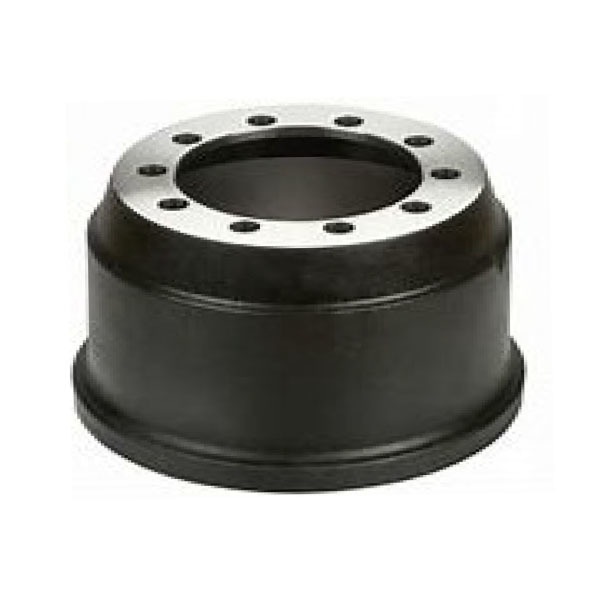
How to Choose the Right Rear Axle Brake Drum for Your Vehicle
When it comes to vehicle safety and performance, the importance of the **rear axle brake drum** cannot be overstated. Brake drums play an essential role in your vehicle's braking system, and choosing the right one is crucial for maintaining optimal performance. In this guide, we will delve into the specifics of selecting the correct rear axle brake drum for your vehicle, ensuring you make informed decisions that enhance safety and efficiency.
Table of Contents
1. Understanding Brake Drums and Their Functionality
2. Factors to Consider When Choosing a Rear Axle Brake Drum
- 2.1 Size and Dimensions
- 2.2 Material and Construction
- 2.3 Design Types
3. Compatibility and Vehicle Specifications
4. Installation Tips for Your New Brake Drum
5. Maintenance Best Practices for Brake Drums
6. Common Mistakes to Avoid When Choosing Brake Drums
7. Conclusion
8. Frequently Asked Questions
Understanding Brake Drums and Their Functionality
Brake drums are vital components of a vehicle's braking system, particularly in vehicles equipped with drum brakes. These components house the brake shoes, which press against the inner surface of the drum to create friction, ultimately slowing down or stopping the vehicle. Understanding how brake drums function will aid you in making an informed choice when selecting one for your vehicle.
**Key Functions of Brake Drums:**
- **Friction Generation**: Brake drums work in tandem with brake shoes to create the necessary friction for deceleration.
- **Heat Dissipation**: They help dissipate the heat generated during braking, preventing overheating and ensuring consistent performance.
- **Durability and Strength**: High-quality brake drums are designed to withstand significant wear and tear, contributing to overall vehicle safety.
Factors to Consider When Choosing a Rear Axle Brake Drum
Selecting the right rear axle brake drum involves several critical factors. Below we discuss the primary considerations to ensure you choose the best option for your vehicle.
Size and Dimensions
The size and dimensions of the brake drum are pivotal in ensuring correct fitment and functionality. When assessing the size, consider the following:
- **Diameter**: Measure the diameter of your existing drum or refer to your vehicle specifications. Common sizes include 9, 10, or 12 inches.
- **Width**: Determine the width of the drum, as this can affect the braking performance and compatibility with your brake shoes.
- **Bolt Pattern**: Check the bolt pattern to ensure it matches your vehicle's specifications. A mismatch can lead to installation difficulties and compromised safety.
Material and Construction
The material and construction of the brake drum significantly impact its performance and lifespan. There are several materials commonly used in manufacturing brake drums:
- **Cast Iron**: Known for its durability and cost-effectiveness, cast iron is a popular choice. However, it may be heavier than other options.
- **Aluminum**: Lightweight and resistant to corrosion, aluminum brake drums can improve overall vehicle performance but may be pricier.
- **Composite Materials**: Some modern brake drums utilize composite materials that offer a balance of strength and weight, enhancing braking efficiency.
Design Types
Brake drums come in different designs, each tailored for specific applications. The primary types include:
- **Standard Drums**: These are the most common and are suitable for everyday vehicles.
- **Performance Drums**: Designed for high-performance vehicles, these drums offer enhanced cooling and durability.
- **Drilled or Slotted Drums**: These specialized designs help dissipate heat and prevent brake fade, making them ideal for racing or heavy-duty applications.
Compatibility and Vehicle Specifications
Before purchasing a rear axle brake drum, it is crucial to verify its compatibility with your vehicle. Check the following specifications:
- **Make and Model**: Ensure the brake drum is compatible with your specific vehicle make and model.
- **Year of Manufacture**: Different model years may have varying specifications. Always refer to your vehicle's manual or manufacturer guidelines.
- **Brake System Type**: Identify whether your vehicle utilizes drum or disc brakes, as this will influence your choice.
Installation Tips for Your New Brake Drum
Proper installation of the brake drum is critical for ensuring safety and performance. Here are some essential installation tips:
1. **Gather the Right Tools**: Have all necessary tools ready, including wrenches, screwdrivers, and brake cleaning tools.
2. **Follow Manufacturer Guidelines**: Adhere to the installation instructions provided by the manufacturer to avoid errors.
3. **Inspect Other Components**: When installing a new brake drum, check the condition of brake shoes, springs, and other related components.
4. **Use a Torque Wrench**: Ensure that bolts are tightened to the manufacturer's recommended torque specifications.
Maintenance Best Practices for Brake Drums
To extend the lifespan of your brake drums and maintain optimal performance, consider the following maintenance practices:
- **Regular Inspections**: Conduct periodic inspections to check for wear, cracks, or warping of the drum.
- **Brake Shoe Replacement**: Replace brake shoes when they become worn to prevent damage to the drum.
- **Cleaning**: Clean brake drums regularly to remove dust and debris that can affect braking efficiency.
- **Monitor Performance**: Pay attention to any unusual noises or changes in braking performance, as these may indicate issues with the drum.
Common Mistakes to Avoid When Choosing Brake Drums
Choosing the wrong brake drum can compromise safety and performance. Here are some common mistakes to avoid:
- **Ignoring Compatibility**: Failing to verify compatibility with your vehicle can lead to installation challenges.
- **Overlooking Quality**: Choosing low-quality or cheaper options may save money initially but could lead to costly repairs down the line.
- **Neglecting Maintenance**: Regular maintenance is essential for ensuring ongoing performance and safety. Don’t skip these steps.
Conclusion
Selecting the right rear axle brake drum for your vehicle is a critical decision that impacts both safety and performance. By understanding the various factors involved, including size, material, compatibility, and maintenance, you can make informed choices that enhance your vehicle's braking system. Don't underestimate the importance of quality and proper installation—these can significantly affect your overall driving experience. Equipped with the knowledge from this guide, you are now prepared to choose the perfect brake drum for your vehicle.
Frequently Asked Questions
**1. How do I know if my brake drum needs replacement?**
Signs that your brake drum may need replacement include unusual noises, vibrations during braking, or a decrease in braking performance.
**2. Can I use a different brand of brake drum than what was originally installed?**
Yes, as long as the replacement drum meets the specifications for your vehicle, including size and compatibility.
**3. How often should I replace my rear axle brake drums?**
While there is no set timeline for replacement, inspect brake drums during routine maintenance and replace them if they show signs of wear or damage.
**4. What tools do I need to install a rear axle brake drum?**
Basic tools include wrenches, screwdrivers, and a torque wrench. Additional tools may be required based on your vehicle's specific design.
**5. Is it necessary to replace brake shoes when changing the brake drum?**
While not always necessary, it is a good practice to replace brake shoes at the same time to ensure optimal performance and reduce the risk of damage to the new drum.
Contact
E-mail:
Phone
Add:
West of Dongwang Village, Gucheng Town, Longyao County, Xingtai City, Hebei Province


